White Hydrangeas – The Paniculata Group
White Hydrangeas – The Paniculata Group
In July the blue or pink mophead and lacecap are the stars of the show on Cape Cod. But as we move into August, it’s time for the panicle hydrangeas to take center stage. Those in the Hydrangea paniculata group come in all sizes and they are bone-hardy shrubs that reliably flower from late summer into fall.
Since these hydrangeas bloom on new growth they will flower even after the type of cold weather that has zapped the flowers on their blue cousins. These plants also do well in full sun gardens where the mopheads and lacecaps are likely to brown out quickly. And fortunately there is a variety of Hydrangea paniculata for every sized garden. Here are just a few of the many types of panicle hydrangeas that we commonly carry.
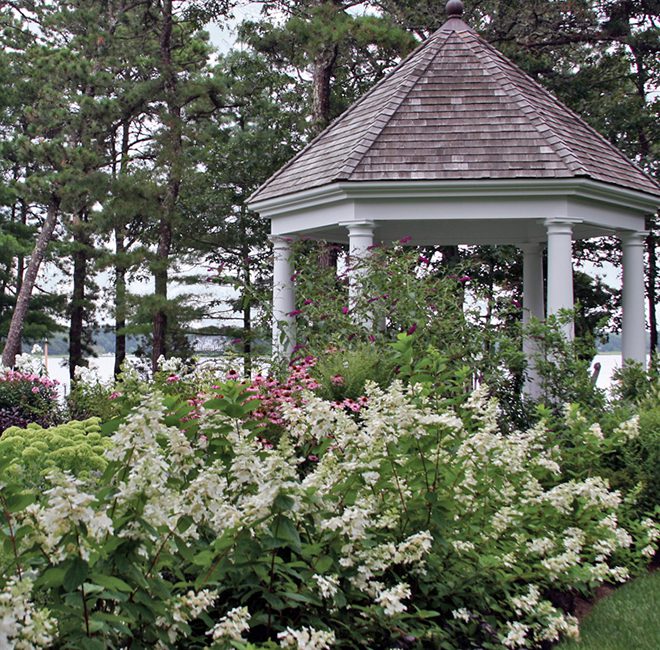
This is a group of a variety called ‘Tardiva.’ This is a large-growing plant and it’s especially suitable for use in a privacy planting or mixed-shrub border. Tardiva can even be pruned as a multi-stemmed small tree. Tardiva grows quickly and the flowers are a long and lacy form.
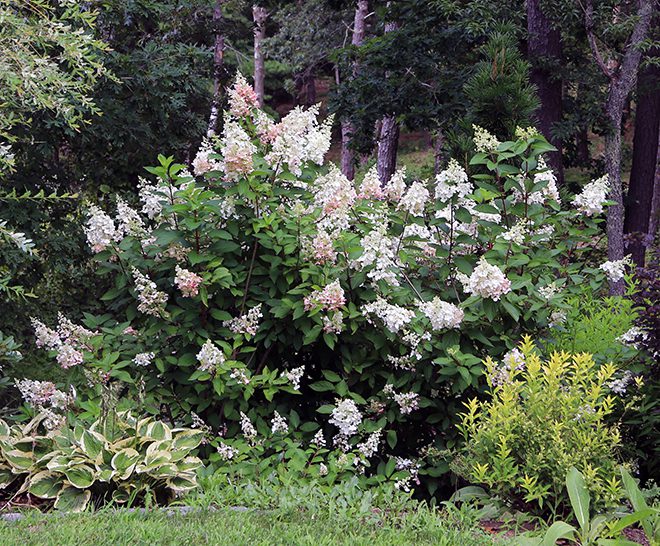
This is a ‘Pinky Winky’ hydrangea. Like ‘Tardiva,’ this one grows tall but it has a slightly more upright habit and the flowers turn pink from the bottom up, creating a nice two-toned look in August and early September. The beauty of these flowers is that they don’t become water-saturated and heavy after a rain.
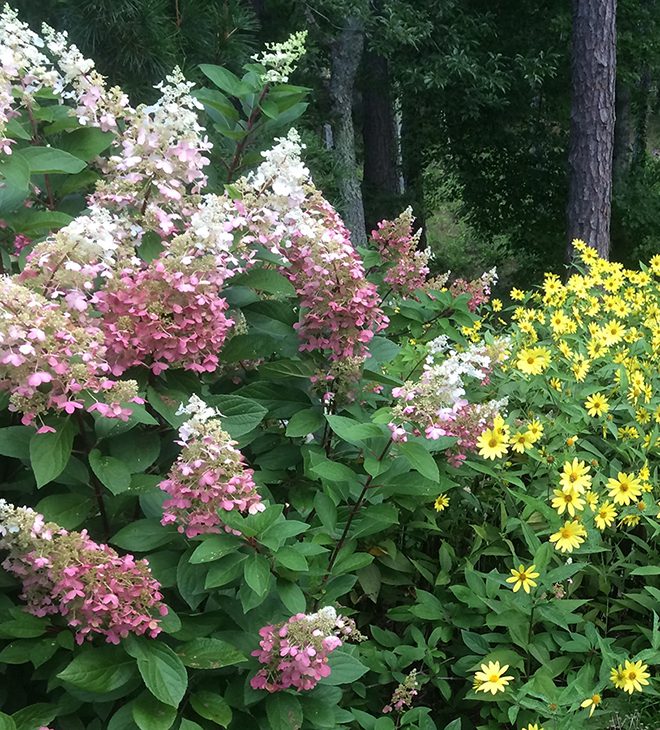
Here are how the ‘Pinky Winky’ flowers look in September. This is an elegant shrub with a silly name!
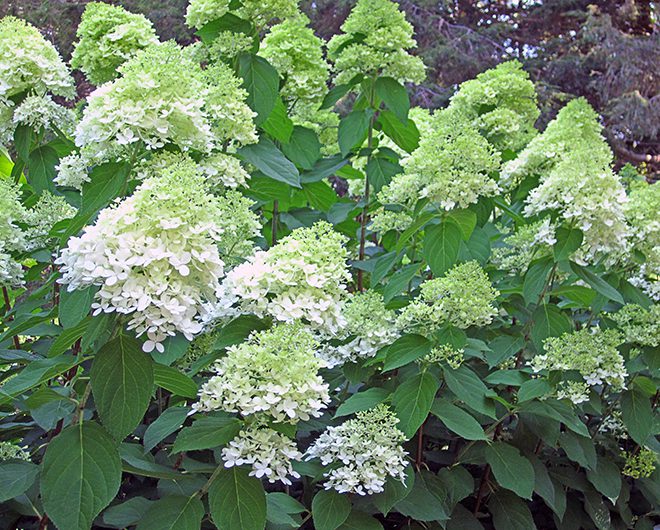
One of the most popular varieties of Hydrangea paniculata is ‘Limelight.’ The flowers start out a lime green, soon turn white and then become pink-tinged in the fall. Limelight grows quite large so place it accordingly. If you need a shorter shrub, try ‘Little Lime’ which grows to about 5 feet tall and wide.
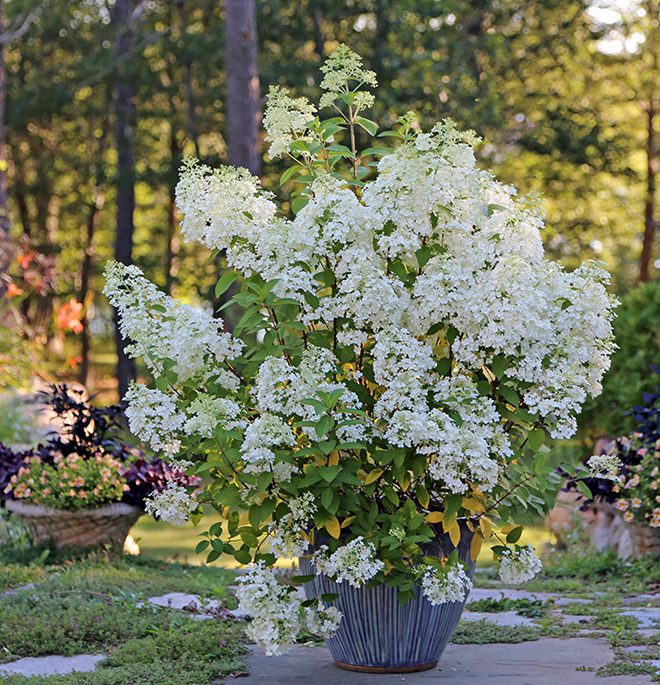
Need a shorter shrub? Bobo has large flowers that cover a smaller sized plant. Useful for foundation plantings, flowerbeds and containers, ‘Bobo’ grows to about 3 feet tall and wide.

This is a grafted tree form of Hydrangea paniculata ‘Grandiflora.’ It’s where the commonly name PeeGee hydrangea comes from. (It’s Hydrangea p. G.) You can find ‘Grandiflora’ in shrub or tree form. Other hydrangeas such as Tardiva and LimeLight are also available as grafted small trees.
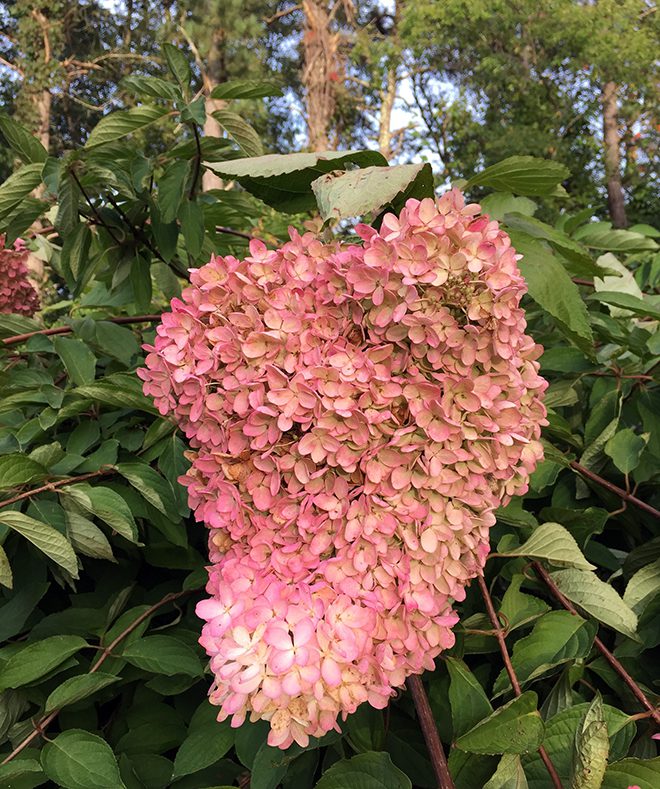
This is a PeeGee flower, larger than a human’s head and turning pink in October.
Prune all of the Hydrangea paniculata group in the early spring. Although they will still flower if pruned back hard, the stems will be weaker and the flowers more likely to bend into the mud if they are cut back substantially every year. The older stems will be stronger. In general, prune these plants by first removing dead wood, and next locating stems that are rubbing and removing one of those. Look for stems that head into the center of the plant instead of out and away from the middle, and take those away. Finally, tweak the shape by snipping some of the stems back.
8 Comments
Leave a Comment
Subscribe To Our Newsletter
Sign up for our weekly email about sales and events.

Have you heard of a triple oak leaf hydragea? I am searching for one
Julie,
I think you might have been given the wrong name. There is a nursery called Triple Oaks Nursery that sells oak leaf hydrangeas, and someone might have confused the source name with the cultivar name. We’ve heard of Amethyst, Harmony, Snow Queen, Pee Wee, Ruby Slippers, Munchkin and more, but not anything called Triple.
Hi C L I was wondering if you know what has been eating the leaves of my butterfly bush?
Thank you!
Donna,
Probably earwigs. They usually stop mid-summer but you can use Sluggo Plus around the shrubs if you want to hasten the process…
We are looking for some of those huge white Hydrangeas, I think they are called IncrediBall? Do you sell those?
Steve – Incrediball is a variety we frequently have in stock. Call the store to see if we have plants now: 508-775-8703 – ask to be transferred to the Nursery department and they can tell you if this is something we have at this moment.
I planted an Incrediball hydrangea in what once was a rock garden. The soil was soft but the plants look distressed. I understand if I put Espoma Hollytone on them I may make them turn color. So? What do you suggest….Miracle grow in the water?
Marsha – Incrediball will always be white and won’t turn color no matter what you put on the soil. That information is for other species of Hydrangea. If the plants look distressed they are likely needing water or organic matter (top dressing of compost or composted manure) especially if the soil is rocky or not much dirt there. They do not need fertilizer. Next spring give an application of Holly-tone but not at this time of year.